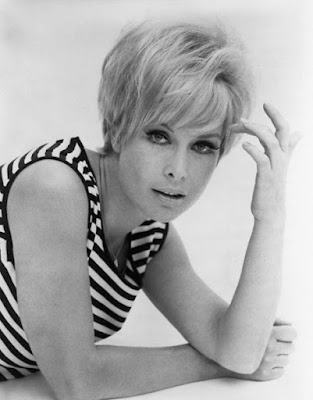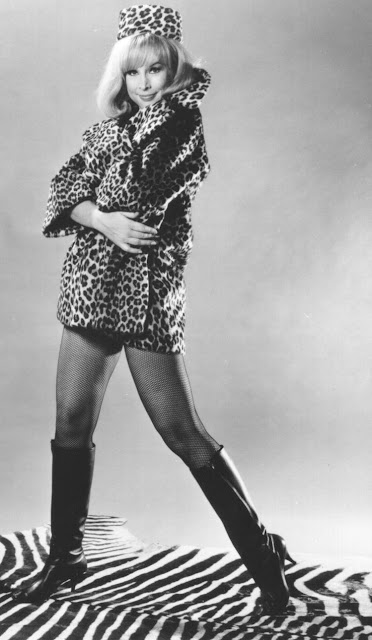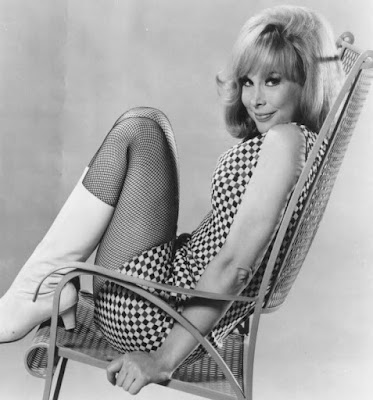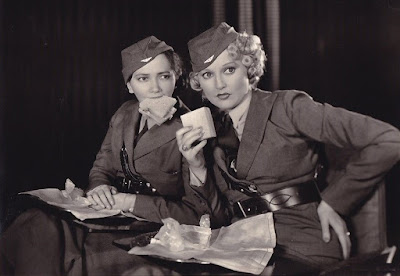Starring: Patsy Kelly, Thelma Todd, Eddie Phillips, Benny Baker, and Frank Moran
Director: Gus Mein
Rating: Eight of Ten Stars
Thelma (Todd) is being pursued by a man (Phillips) she believes to be rich, but her roommate Patsy (Kelly) thinks he may be too good to be true. Although Thelma's suitor tries to pawn Patsy off on his brother (Baker), it merely gives Patty a chance to confirm her suspicions... at which point Patsy goes from trying to break up the happy couple to taking advantage the man's deception while exposing him.
"Three Chumps Ahead" is one of the best short comedies starring Thelma Todd and Patsy Kelly. It's a tightly scripted where every character is deftly and firmly established through both their actions and dialogue, every joke and gag grows organically from the story, and there isn't a wasted moment or shaky performance to be found. This is a film where each cast member gets to play to their strengths as performers, and where they have good material to work with. Even better, the film has an ending I didn't see coming until its set-up was unfolding (and which I won't comment on, because I'll ruin one of the best parts of the film).
Unlike many of the Thelma Todd-starring shorts (where she first co-starred with ZaSu Pitts and then later Kelly), its female main characters remain the focus of the story and the action. Todd and Kelly even have roughly the same amount of screen-time and importance to the story, with Kelly edging out Todd slightly, because her character is more aggressive and contributes more to moving the story forward. Even better, each actress has material to work with that suits their styles, with Kelly being brash without being so obnoxious or dull-witted that she becomes annoying; Todd getting to be elegant even while doing a prat-fall and flouncing around in response to Kelly's antics.
The only complaints I have with the film boil down to quibbles really, and they did next to nothing to impact the entertainment value of the film.
First, as much as I appreciate the speed with which this film moves, it might move a little too fast at one point: Although it turns out that Patsy had good cause to be suspicious of Thelma's boyfriend, it would have been nice if there had been a little clear evidence that she could have seized on before meeting his brother and, literally, beating the truth out of him. As things stand, Patsy comes across just a little too petty when she appears to be trying to sabotage Thelma's date out of jealousy, or possibly resentment over being treated like a servant. That said, Thelma wouldn't have been treating like a servant if she hadn't been disruptive, so there's a bit of a feedback loop going on.
Second, there's a cramped, impoverished feeling that permeates this film that I haven't noticed in previous installments in this series. The apartment and restaurant sets feel so claustrophobic that the end result reminded me of some of the lower-budget Poverty Row films I've watched over the years. I know part of this is by design--Todd and Kelly's characters are presented as working class, and Todd's beau can't afford to take her anywhere but a hole-in-the-wall establishment--but I wonder if this was also a reflection of budget concerns. I have read that these films were not earning the level of money that producer Hal Roach was hoping for, so maybe the team making them was receiving less money to work with as well? I'll have to see what develops as I keep watching. (I will be reviewing one Thelma Todd vehicle every week through the end of 2019, including several more of the ones she made with Patsy Kelly.)
Finally, Thelma Todd keeps her clothes on. While I never mind seeing an attractive woman in very little, it's usually twice as fun when it's Todd who's stripping down, because of the way she usually manages to still retain an air of elegance and dignity. Plus, some of her funniest bits have been performed in a slip or dressing gown. (I can't be too unhappy that Todd remains fully clothed, as there really isn't an excuse for it anywhere in the story, and this film is so strong because it's driven by the story rather than being a cobbled-together series of gags as some of them are. Of course, Them could also be remaining fully clothed, because by the time this film was released in 1934, the Hays Production Code was in full effect, and filmmakers had to be more careful with the raciness.)
"Three Chumps Ahead" is one of the short films included in Complete Hal Roach Thelma Todd & Patsy Kelly three-disc DVD collection. It's also one of the films that will make you feel the set is worth your time and money.
























































.jpg)






.jpg)
